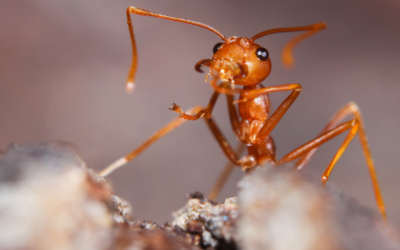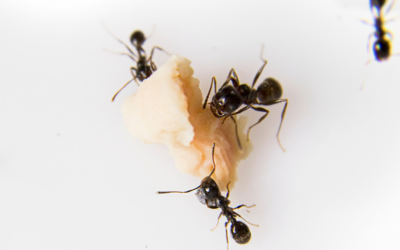Living in Central Texas means encountering various ant species, some of which can deliver painful bites. Being aware of how to identify and treat ant bites is essential for a quick and effective response. This guide will explore ant bites. We will cover common ant species in the region, how to identify their bites and best practices for treating them.
Ant Species and Their Bites
Central Texas is home to a variety of ant species, each with its distinct bite characteristics. Let’s take a closer look at some common ant species and their bites:
Fire Ant Stings
- Fire Ants: Fire ant stings result in a painful and itchy sensation. These bites typically appear as small, red welts that may develop into blisters. Fire ants are aggressive and may sting multiple times, leaving a trail of bites.
Carpenter Ant Bites
- Carpenter Ants: Unlike fire ants, carpenter ants do not bite in defense. However, they can deliver a mild bite if they feel threatened. These bites are typically less painful than a fire ant’s and may cause minor swelling and irritation.
Odorous House Species Bites
- Odorous House Ants: Odorous house ants rarely bite, but if provoked, they may bite to defend themselves. Their bites are generally harmless, causing minimal discomfort and localized irritation.
Identifying Bites
Identifying bites can help determine the appropriate treatment. Here are some key characteristics to look for when identifying ant bites:
Appearance
- Redness and Swelling: these bites often result in localized redness and swelling around the bite area. The size and intensity of the reaction may vary depending on the individual’s sensitivity to the ant’s venom.
- bites can cause intense itching and irritation. This can lead to an urge to scratch the affected area.
Treatment
Prompt and proper treatment is crucial for relieving discomfort and minimizing the risk of infection. Here are some general guidelines for treating ant bites:
First Aid
- Wash the Area: Clean the affected area with mild soap and water to reduce the risk of infection. Gently pat it dry with a clean towel.
- Apply Cold Compress: Use a cold compress or ice pack wrapped in a cloth to alleviate swelling and reduce pain. Apply it to the bite area for around 10 minutes at a time.
- Topical Anti-itch Creams: Over-the-counter anti-itch creams or hydrocortisone creams can help relieve itching and irritation. Apply them as directed on the packaging.
- Consider taking an over-the-counter oral antihistamine if the itching persists or becomes severe. This can help reduce the allergic response. Follow the instructions and consult a healthcare professional if needed.
When to Seek Medical Attention
While most bites can be effectively treated at home, certain situations may require medical attention:
- Severe Allergic Reactions: If you experience any of the following symptoms after a bite, seek immediate medical assistance: – Difficulty breathing – Chest tightness – Dizziness – Swelling of the face, lips, or throat These symptoms may indicate a severe allergic reaction.
- Signs of Infection: If the bite area becomes increasingly swollen, painful, red, or starts oozing pus, it could be a sign of infection. Consult a healthcare professional for appropriate treatment.
Conclusion:
Being prepared and knowledgeable about ant bites is essential for Central Texas residents. Understanding the characteristics of different ant species and their bites, as well as knowing how to identify and treat the bites, allows for prompt and effective management. Remember to take necessary precautions, seek medical attention when needed, and enjoy your Central Texas surroundings with confidence, knowing you’re prepared to handle ant bites.




